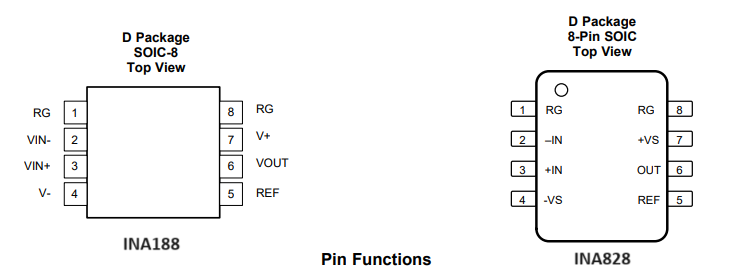Other Parts Discussed in Thread: INA821, INA828,
Hi Team,
One of my customers is having a hard time finding large public supply of the INA188IDR. I know there is a tube version available, the INA188ID, but is there another device that is a drop-in replacement that has a tape and reel? When comparing GPN, the INA828 is shown as a drop in replacement here, but when comparing full orderable on ti.com, the 828 does not come up and only calls the INA821 as a same functionality replacement.
Is the INA828IDR and subsequently the INA828ID a drop-in replacement for the INA188IDR?
Thanks,
Trevor Hoffman


